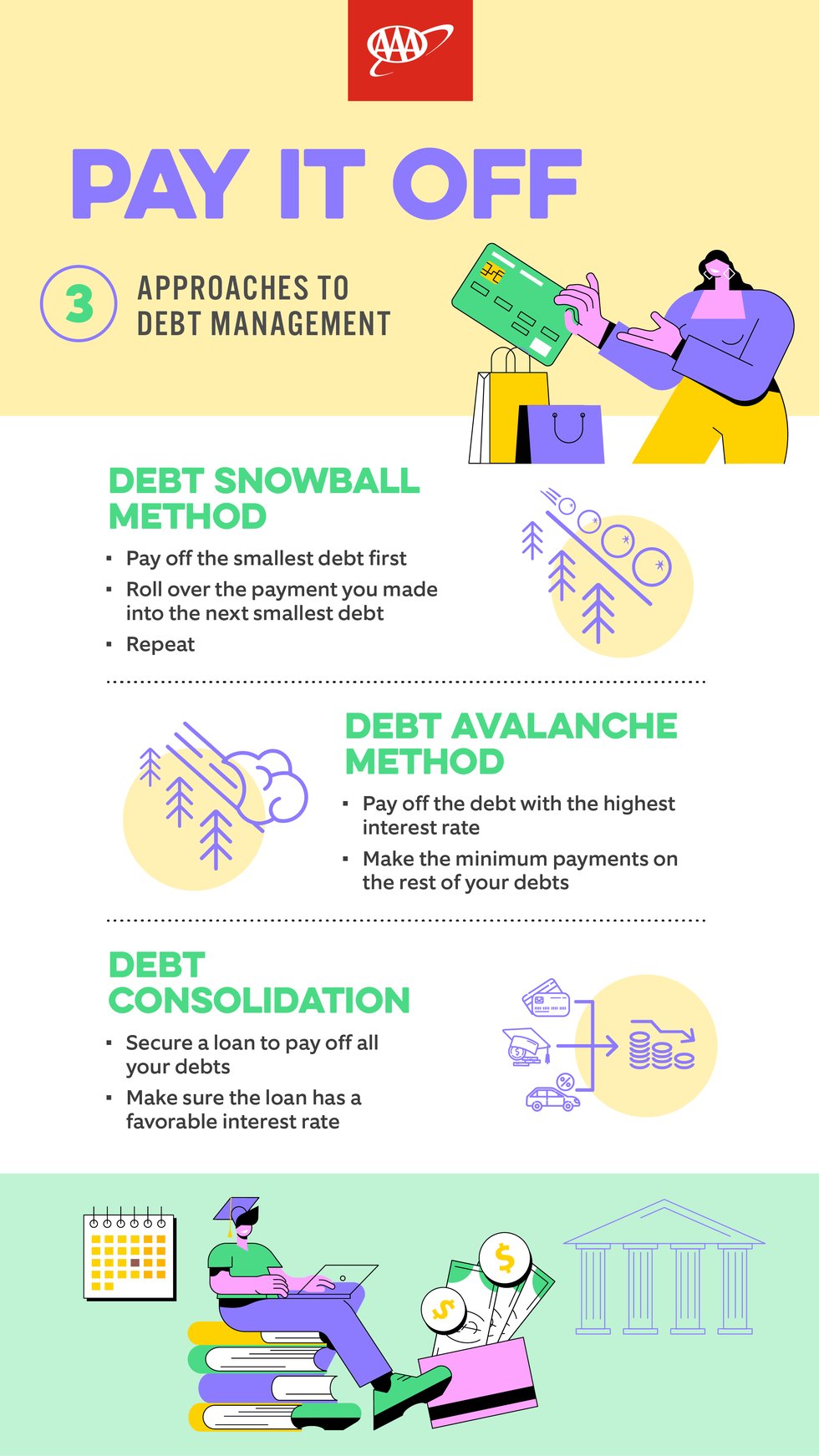Credit Card Debt or Student Loans — What You Should Pay Off First
How to prioritize your payments, plus 3 methods for managing your debt


Managing personal finances can be a juggling act, especially with various debts like credit cards and student loans. Both can have a significant impact on your financial well-being. So, if you're on a mission to achieve debt freedom, you're likely asking yourself, "Which should I pay off first—credit card debt or student loans?" Here's what you need to know when deciding which debt to prioritize.

Prioritizing your payments
When deciding which debt to tackle first, you must consider what's costing you the most in the long run. So, look at the interest rates on your credit cards and student loans.Credit card debt tends to be the real troublemaker because it often comes with sky-high interest rates. In addition, if you carry a balance on your card from month to month, it's like a constant drain on your wallet. That's why it's usually best to prioritize paying off your credit card debt first.
The interest on your credit card debt can add up, especially if you have a hefty balance. Forbes Advisor says the average credit card interest rate is 24.26%. On the other hand, the average 10-year private student loan interest rate is 7.51%. Those high-interest rates on your credit card mean you're shelling out more money in the long run, compared to your student loans.
Therefore, getting your credit card debt out of the way as soon as possible is a good financial move. Chip away at the balances on your credit cards, and find a way to speed up the repayment process. It's all about taking charge and tackling the debt costing you the most.

Managing your debt
While prioritizing credit card debt may seem like the best approach, you may also want to consider other debt repayment strategies. Finding the proper repayment method can help you stay motivated and eliminate debt.
Debt snowball method
With the debt snowball method, you focus on your smallest debt. Put in extra effort to pay it off while making minimum payments on other debts.
Once that smallest debt is conquered, add the amount you were paying towards it to the minimum payment of the next smallest debt. This creates a snowball effect, with your payments growing as you move on to the next debt.
As you keep rolling, tackling one debt after another, the amount you can put toward each debt increases. It's like a snowball gaining speed and size as it goes down a hill. The more debts you eliminate, the more you can throw at the remaining ones.
The advantage of the debt snowball method is that it gives you small wins along the way, keeping you motivated and empowered as you see your debts disappear one by one.
Debt avalanche method
With the debt avalanche method, you first focus on the debts with the highest interest rates. Instead of starting small, like the debt snowball method, you go straight for the debts costing you the most in interest. By prioritizing them, you're minimizing the amount of interest you're paying over time.

So, list out all your debts, including credit cards, student loans, or any other outstanding balances. Then, organize them based on their interest rates, from highest to lowest. Once you've triumphed over that high-interest debt, it's time to move on to the next one on the list, and so on. By following the debt avalanche method, you're strategically eliminating the debts costing you the most in interest.
Debt consolidation
Debt consolidation combines multiple debts into one manageable payment. Instead of dealing with various creditors and due dates, you simplify things by bringing everything together.
In other words, you take out a new loan and use that money to pay off all your debts. It's like pressing the reset button on your debt situation.
By consolidating your debts, you're left with just one loan, one monthly payment, and one interest rate to keep track of. Remember, the key to making debt consolidation work in your favor is to secure a loan with a lower interest rate than you currently pay. This way, you can save money in the long run and pay off your debts faster.
